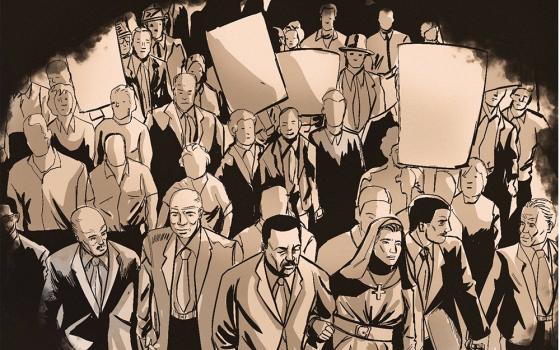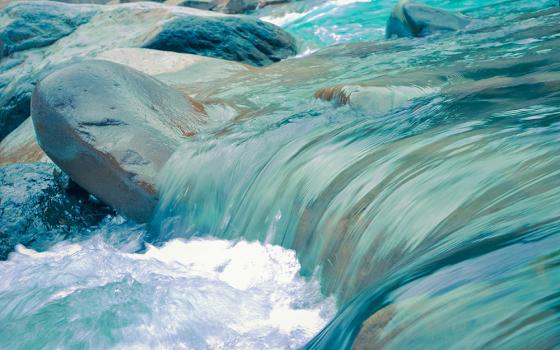
A destroyed house is seen Oct. 31 after Hurricane Sandy passed through Atlantique on Fire Island, N.Y. Millions of people across the eastern United States awoke to scenes of destruction wrought by monster storm Sandy, which knocked out power to huge swa thes of the nation's most densely populated region. (CNS photo/Lucas Jackson, Reuters)
Post-Sandy homes returned to nature?
When Hurricane Sandy hit the Northeastern United States in late October, it decimated the lives of millions of people, and for many left their homes in indiscernible piles of lumber and memories. Now, for those in New York their governor is proposing to buy what remains.
New York Gov. Andrew Cuomo has proposed to buy homes wrecked by the storm and convert the land to a more natural setting, rather than attempt to rebuild. The New York Times reported that through the plan, which still requires federal approval, Cuomo would offer homeowners in floodplains pre-storm value for their property, and additional bonuses for those who lived in more vulnerable areas.
“Some properties could be turned into dunes, wetlands or other natural buffers that would help protect coastal communities from ferocious storms; other parcels could be combined and turned into public parkland,” according to the Times.
Reaction among storm victims to the plan has been mixed, according to a CBS News Report, with one resident saying she’d rather the governor help in rebuilding than offering buyouts.
From oil fields to mountaintops for Interior nominee
On Wednesday, President Barack Obama nominated Sally Jewell as his next Secretary of the Interior. Jewell has a unique background, working first in the oil industry as an engineer for Mobil Oil, then moving to the banking world. More recently she has filled the role of CEO at Recreational Equipment, Inc. (REI), the outdoor retailer and the U.S.’s largest community cooperative.
The Seattle Times recently re-published a profile of Jewell from 2005, at the time she became REI’s chief executive. New York Magazine offers their own snapshot, highlighting some of the unique qualities she’d bring to the White House, such as likely becoming the first mountain-climbing Cabinet member.
Wind sails to top of energy list
The past year saw wind energy climb the ranks in its production. According to the American Wind Energy Association, wind power in 2012 provided 60,000 megawatts of energy, enough to 15 million homes, approximately the number of houses in Colorado, Iowa, Maryland, Michigan, Nevada and Ohio.
Wind power was also the top supplier of new energy in 2012, accounting for 42 percent of all new generating capacity; as a whole, renewable energies generated more than half (55 percent) of new generating capacity nationwide.
Warmer weather not for these dogs
While unusually warm temperatures have presented a nice surprise for some parts of the U.S. this winter, it’s tough sledding for others.
Specifically, dog sledders in Alaska, who have seen more temperatures in the 30s and 40s than the more favorable sub-temperatures, according to the New York Times. As a result, several warm-up races for the Iditarod — the premier Alaskan event spanning more than 1,000 miles from Anchorage to Nome — have been either cancelled, postponed, or have altered their courses.
Those include the Knick 200, the Northern Lights 300, the John Beargrease dog sled race and the Sheep Mountain 150.
The warmer temperatures lead not only to less snow and worse trail conditions, but also heightens the risk of overheating for the dogs. The Mat-Su Valley Frontiersman spoke with several mushers and organizers about the challenges weather has presented, with one saying the suboptimal conditions are a part of the problem solving the sport requires.
“Every bit of it. And trail conditions are no different than any other problem,” Sue Allen, a race organizer for the Northern Lights 300, told the Frontiersman.
Amidst rumors that the Iditarod also risked postponement or cancellation, race organizers stated on their website Feb. 6 that the signature dog-sled event remains on track to begin March 2.




